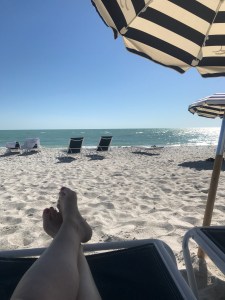
Haunting cover, haunting book.
40 years ago off the Cornwall coast while on a family holiday, two young brothers were swimming together. The boys were suddenly in over their heads, and the younger brother drowned. The Day That Went Missing (289 pages, 2018) was written by the surviving brother in an attempt to address what happened that fateful day and the way in which the family dealt with it.
As he reached middle age, Richard Beard realized he needed to confront his brother’s death and explore why he never allowed himself to grieve. For decades Nicky’s name was not mentioned in the family, which included his two parents and two other brothers as well as grandparents. Richard felt the mystery of the details of the day and his long-stifled emotions were negatively impacting his adult relationships. He decided he needed find out what exactly happened to his brother, and how his family reacted after the tragic death.
Beard embarks on his own “inquest” into Nicky’s death, interviewing surviving family members and digging into family memorabilia and history. He returns to the Cornish coast and tries to find the exact beach on which the drowning occurred. He visits the cottage the family had been staying in, and meets one of the rescuers who were dispatched that day when the call for help went out. He pores over any information he can find out about Nicky – his report cards, his letters home from boarding school -in an attempt to better know his brother.
Ultimately Beard uncovers much about his brother, his family and their dynamics, and what actually happened that day. The family’s immediate reaction to Nicky’s death is finally explored; learning of this reaction helps make sense of their decades-long avoidance of discussing Nicky.
The book is haunting and sad yet very well-written and satisfying. I read the Kindle version so unfortunately do not have to lend out!





















